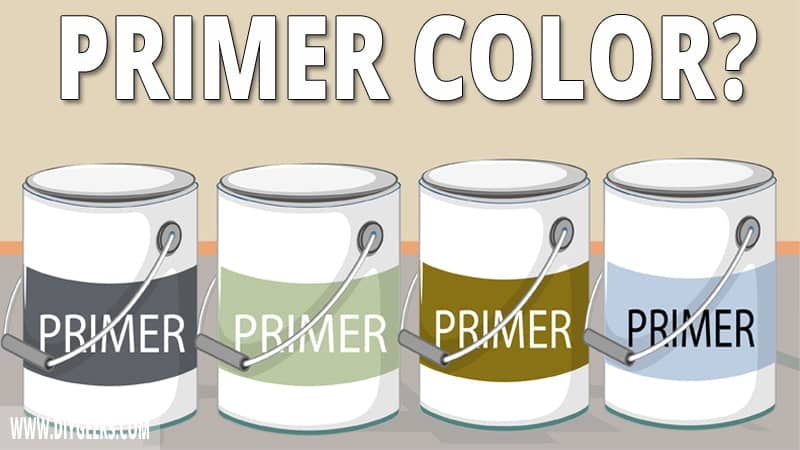The primer coating is designed to cover imperfections in the surface and produce a base coat for paint.
You must use neutral color shaded primer, such as white or grey, as they won’t bleed-through and will cover the imperfections and stains on the surface better.
You can use the same color shade for primer and paint only if you want a brighter and more colorful finish. Avoid using opposite color shades as they will bleed through.
Does Primer Color Matter?
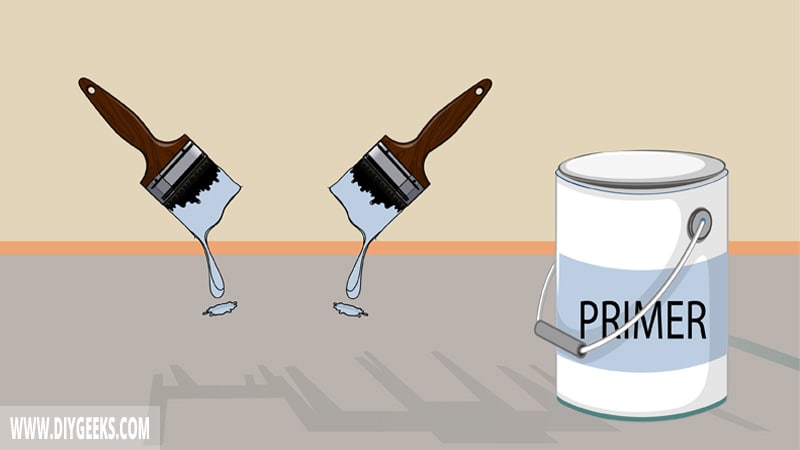
Primer color doesn’t matter unless you are changing the color shade of the existing finish.
The purpose of primer is to create a good undercoat for the paint and to seal or cover every imperfection in the material. The basecoat doesn’t need color to cover imperfections or guarantee a perfect finish. All it needs is adhesion and proper coverage.
But, using a primer and paint with the same color will produce a vibrant or more colorful finish. Also, you need a dark shade of primer if you are using a dark shade of paint.
Other than that, don’t bother finding the perfect color of primer as it doesn’t matter — its finish will get covered by the paint.
Primers are designed to have neutral colors such as white, grey, and black. The purpose of doing this is so the finish can come out well.
A tinted primer color can bleed through and show under paint, especially if you use a dark shade primer under white paint.
To prevent this, primers come with a neutral color that wouldn’t interfere with the color or sheen of the finish.
However, paint companies are now producing tinted primers with colorants to improve the vibrancy of the finish and to help cover light or dark shades.
Can Primer Have The Same Color As Paint?
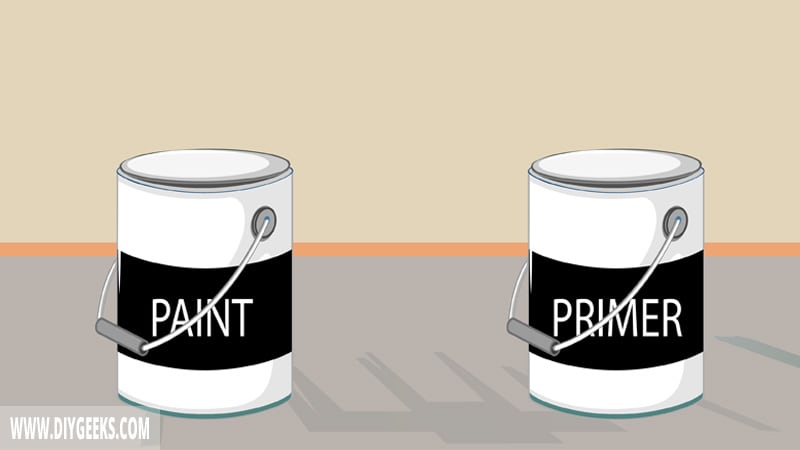
Primer can have the same color as paint, but it’s not necessary and doesn’t make a big difference. You can use the same color if you want a colorful finish or a mural.
An undercoat is designed to be neutral and shouldn’t interfere with the color of the finish — that’s why they are designed with a natural color.
You can use the same color of primer and paint if you want a brighter and more colorful finish. The finish will appear darker if you use a dark shade primer and a deep brown (or dark) paint.
You can use dark shade primers if the surface is affected by stains, water, or other damage that can bleed through the paint. A dark shade stain-blocking primer will cover these imperfections.
Related Read: Can You Use Primer as Paint?
Does Primer Color Affect the Paint Finish?
The primer color does affect the paint finish only if you apply one (1) thin coat of paint. In such cases, the primer color can bleed through since the paint color is thin and can’t properly cover the undercoat.
The primer color doesn’t affect the paint finish if you apply more than 2 coats of paint. Two (2) thick coats of paint will cover the undercoat properly and prevent it from bleeding through, even if it has an opposite color shade.
White vs. Grey Primer
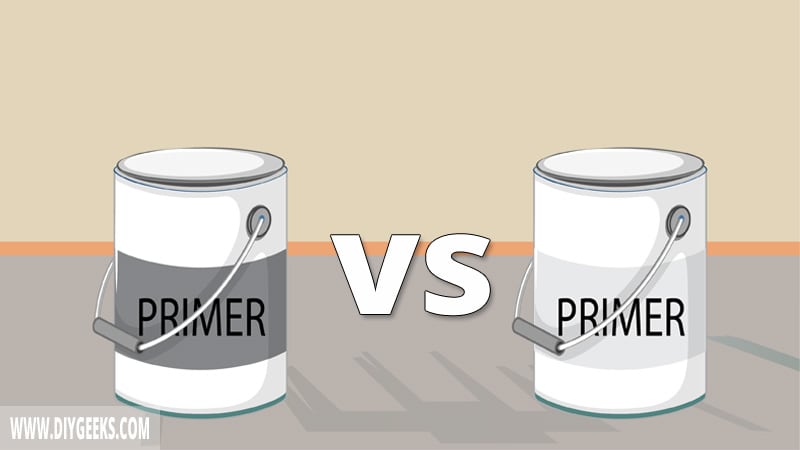
You can use either white or grey primer, both colors are considered the best. However, white primers are the more universal color because you can use them with any type of paint regardless of the flow. They are also more common.
But they have a flaw, they aren’t great with dark finishes. You’ll need 3-4 coats of white primer to cover black, deep blue, or red paint.
Grey primers are more favorable for covering deep finishes since the grey color has a darker tint. They are perfect for moving from a light color to a deeper or darker finish. For instance, to paint deep brown over a light green color.
These colors (orange and bright green) are bright, and you’ll need up to 4 coats of white primer to seal completely. But with grey primer, you can seal in just two coats.
You can complete the task with just two coats of paint. However, you should know that any of the primers will be a good choice.
Related Read: Does Primer Have To Be Perfect?
What Primer Color To Use For Different Paints?
White Paint
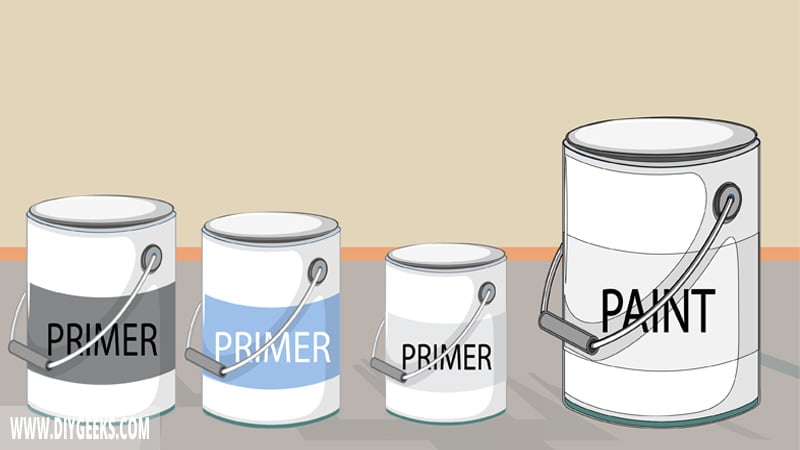
Use a white primer for white paint as it won’t bleed through, and the finish will have an even color shade.
You can use a light-grey primer for white paint, too, as it doesn’t have a high volume of dark tint and works fine for white finishes.
Other colors will increase the chances and bleeding through or staining the finish.
Black
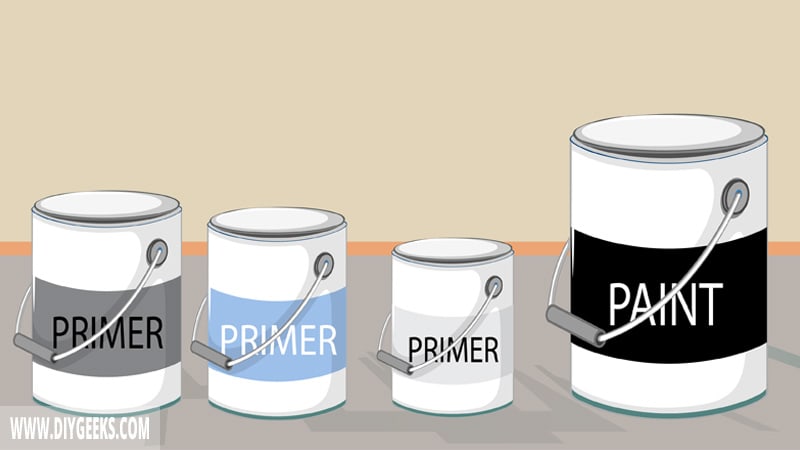
Use a grey primer for black (dark) shaded paints. A dark-shaded or grey primer will cover the stains on the surface better.
Red
Use a grey primer to cover a deep red finish and a white primer to cover light red finishes.
Orange
Use a white or light grey primer for orange paint
Blue
Use a grey or white primer to cover a blue-shaded finish.
Grey
For grey paint, you need to use a grey primer.
[sc name=”primer-color”]
